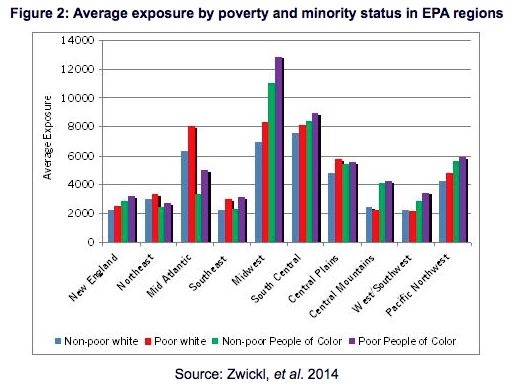America’s corporate polluters are not color-blind. Nor are they oblivious to distinctions of class. Studies of environmental inequality have shown that minorities and low-income communities often bear disproportionate pollution burdens (for overviews, see Ringquist 2005 and Mohai et al. 2006). In other words, rather than being an impersonal “externality” randomly distributed across the population, the distribution of pollution mirrors the distribution of power and wealth.
These disparities result from decisions by firms to site hazardous facilities in the most vulnerable communities and from decisions by government regulators to put lower priority on environmental enforcement in these communities. To some extent, the disparities may also reflect demographic changes as pollution leads affluent people to move out, neighborhood property values to fall, and poorer households to move in. But even after controlling for income differences, racial and ethnic minorities typically face higher pollution burdens, a finding that implies that disparities are a result of differences in political power as well as purchasing power (Boyce 2007).
- See more at: http://triplecrisis.com/mapping-environmental-injustice/



